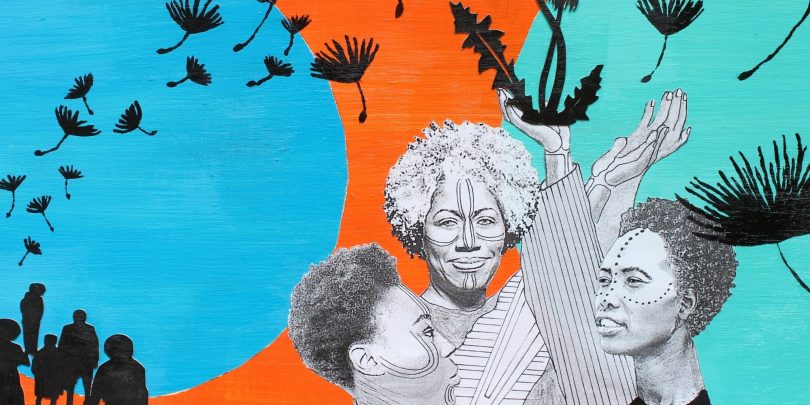Art has the power to inspire, illustrate, move us to action, and draw our attention to forgotten pieces of our own history—and one artist in Canada is bringing all of that together in a powerful series of images featuring black feminist heroes from Canada’s history.
Black feminists often address—through their words or actions—intersections of racism, sexism, class oppression, gender identity and more in society. They argue that these issues are bound together in ways that compound the oppression that women—particularly women of color and others from multiple oppressed groups—experience.
What people may not always realize is that these pioneers fighting for human rights have been with us for centuries. Artist Naomi Moyer, a black woman living in Canada, wanted to draw more attention to Canada’s black feminists. “I wanted to turn the few sentences that were written about these women from history books and online into a huge, colorful punch in the face,” she says in a feature by The Huffington Post.
huffingtonpost.com – Mary Bibb was born in Rhode Island around 1820 as the daughter of free black Quakers. After becoming one of the first black woman teachers in North America, she involved herself in the anti-slavery movement.
However, following the 1850 passing of the Fugitive Slave Law, which demanded that all escaped slaves in America, including her husband, abolitionist Henry Bibb, be returned to their masters upon capture ― even if found in free states ― Bibb moved to Canada. Upon relocating, she and her husband began housing fugitive slaves in their home. Together they started publishing a newspaper, Voice of the Fugitive, the first major paper aimed at black Canadians.
Today, Bibb is considered the first black woman journalist in Canada. And yet, most Canadians do not even know her name. Self-taught artist Naomi Moyer, herself a black woman living in Canada, was disturbed by the lack of awareness surrounding figures like Bibb, women that Moyer could identify with and look up to.
“The school curriculum here is just as flawed and deficient as it is in the States,” Moyer told The Huffington Post. “Not one teacher, from kindergarten to college, gave me any book to read that was written by a black woman, let alone a black Canadian woman. The only kind of exposure most black people really got about ‘blackness’ or the black experience was through media and pop culture from the States.”
Moyer realized that it was extremely important for her to learn the names and stories of the women shaping Canadian black history. If no one else was going to teach her, she would do the research herself. The print series “Black Women in Canada” integrates Moyer’s research with graphic visuals that bring the under-acknowledged heroines to life.



